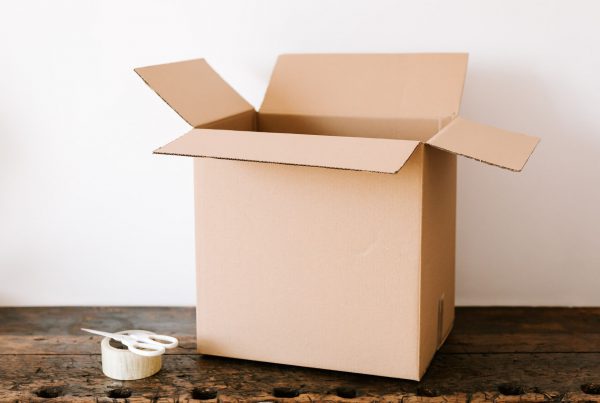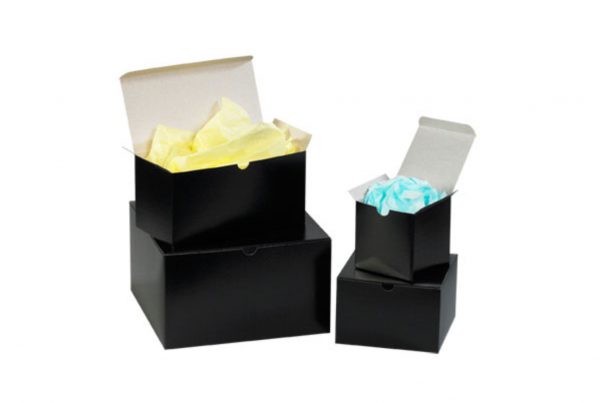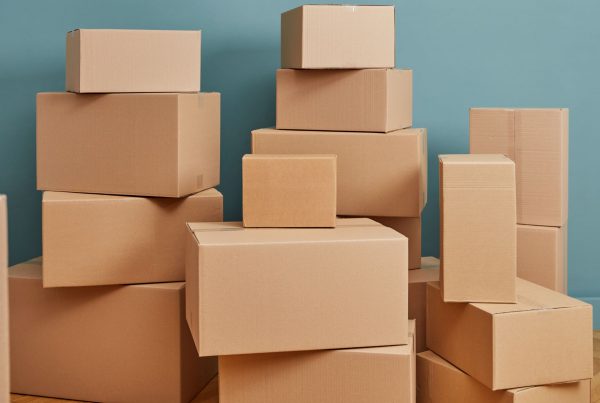We get it: you run a fast-moving online store, and you want lower-impact options without slowing operations. Picture this—first week of a pilot, we swapped in a new mailer and quietly watched damage rates dip while unboxing notes from customers went up. Honestly, I didn’t expect that quick a win. But that little test? It set the path.
In this guide from The Boxery, we walk with you from audit to roll‑out. You’ll see how life cycle inventory and life cycle assessment guide better choices across the supply chain. Regulators like the FTC and ISO standards shape what claims you can make—so here’s the practical, compliant playbook I use in the field.
Expect clear, data-backed steps: which materials and formats protect your products, how to measure environmental impact, and how to brief stakeholders with confidence—real-world examples, honest trade‑offs… and no perfection theater.
Key Takeaways
- We present a practical path from audit to roll‑out so you keep pace with orders.
- Learn how LCI and LCA reduce environmental impact while protecting products.
- Get guidance on certifications, recyclability, and honest claims you can use.
- Compare materials and formats to match your brand goals and budget.
- The Boxery simplifies sourcing, proofing, and delivery so change is easy.
Why Switching Now Pays Off for E‑Commerce Brands
Acting now delivers measurable wins for your e‑commerce brand—faster operations, lower costs, and clearer signals to shoppers and retailers. Retail programs like Walmart’s Sustainable Packaging Scorecard are already changing buyer decisions. Early movers get visibility and, yep, easier placement with the big folks.
Cutting weight and right‑sizing boxes reduces shipping bills and emissions at once. You also lower damage rates, which cuts returns and waste. Those changes boost margins and delivery performance without complex systems. Data matters. Measure across the chain, and you’ll spot savings you can prove out—and talk about without sounding preachy.
I still remember a small apparel brand we helped—scrappy, always short on time. We trimmed two carton sizes, switched to a lighter insert, and clarified disposal instructions inside the flap. Returns dropped a hair; shipping costs nudged down. The founder texted, “It’s not flashy, but wow, it adds up.” Same. It’s the quiet wins.
Move quickly, and you avoid rushed premiums when new rules arrive. That readiness makes your brand more resilient in a changing world.
Early action wins shelf and search advantages. Weight and format cuts lower cost and emissions together. Measured results protect reputation and unlock loyalty.
What Sustainable Packaging Means Today
We focus on measurable trade‑offs so you can choose options that protect products and reduce your ecological footprint. If you’re evaluating true environmental impact, it’s not one magic material—it’s fit, function, and end‑of‑life, all working together.
From LCI to LCA: Evaluating full lifecycle impact
Life cycle inventory (LCI) tracks inputs and outputs across sourcing, production, and disposal. Life cycle assessment (LCA) compares those stages to reveal impacts beyond single claims. That zoomed‑out view helps you avoid false fixes—say, a compostable film that sounds great but contaminates recycling streams where facilities don’t accept it.
Key criteria: protection, cost effectiveness, recyclability, and health
Start with product protection first, then weigh cost, recyclability, material health, and food‑contact safety for recycled content. Look closely at adhesives, inks, and labels—small parts that decide whether a box or bag is truly recyclable.
Standards and guidance: ISO 18601–18606 and FTC Green Guides
ISO 18601–18606 provides a framework for reuse, recycling, and energy recovery so your internal rules stay consistent. The FTC Green Guides help you make clear, accurate claims—“recyclable,” “compostable,” and so on—without greenwashing.
Quick recap: LCI logs flows; LCA frames trade‑offs. Core criteria: protection, cost, recyclability, safety, and material health. Standards keep you aligned and honest.
Set Your Baseline: Packaging Audit and Sustainability Goals
Start with inventory: a clear audit turns assumptions into measurable facts. Map SKUs, specs, vendors, performance. Find where change matters most.
Map the supply chain and bill of materials
List every packaging SKU, materials, dimensions, unit volume, damage rates, and costs across inbound supply, fulfillment, and returns. Track touchpoints that add time or breakage.
Define measurable goals: carbon, water, waste, and recovery
Set targets for carbon, water use, and waste reduction. Add recovery metrics—recyclability rates and take‑back capture—so progress is verifiable.
Quantify your footprint so future comparisons are valid. Find fast wins—right‑sizing cartons or lighter paper grades often pay back quickly. Document regulations: food‑contact rules and recycled‑content limits can shape your options.
The Boxery can co‑create a prioritized roadmap—each decision tied to a business case and an operational owner, so testing and scale are practical and measurable.
Materials Landscape and Trade‑Offs
Materials decide how your parcels survive transit and where they end up after customers open them. Recycled paper and molded pulp give strong, curbside‑friendly protection. Molded pulp often uses recycled newsprint or agricultural residues like straw to form cushioning and trays. Check fiber mix and 100% recycled content options to match strength and recovery goals.
Recycled polymers and take‑back programs
Recycled polymers cut virgin plastic use and boost durability for long journeys. Pair poly mailers and films with a poly take‑back program to close the loop and reduce pollution.
Home compostable options
Certified home‑compostable satchels can work for specific SKUs—but confirm standards and end‑of‑life streams. Compostables can contaminate recycling if mixed, so plan disposal pathways before rollout.
Emerging alternatives
New materials—seaweed films, algae inks, regenerative inputs—show promise. Use trials to validate seal strength, print quality, and shelf life before scaling.
Match material to fragility, moisture needs, and journey length. Use recycled where performance allows, and document weight, protection, and disposal changes. The Boxery sources packaging with verified inputs and provides data sheets to support compliance and testing.
Packaging Formats Built for E‑Commerce
Choose formats that match how your products travel—lightweight mailers for soft goods, rigid boxes for fragile items. The Boxery curates mailers, satchels, boxes, bags, and labels so you can pilot options quickly. Many items can be custom-branded.
Mailers and satchels: recycled, POLLAST!C, and compostable choices
Use mailers for apparel and light goods. Choose recycled poly for durability or home‑compostable satchels where local disposal exists.
Boxes, inserts, and void fill: right‑sizing for product protection
Pick sturdy boxes and tailored inserts for fragile products. Right‑size to cut DIM weight and excess void fill. Aim for recycled options when strength meets quality.
Labels, tapes, and extras: adhesives, recyclability, and brand touchpoints
Compare recycled paper tapes and curbside‑recyclable labels; avoid coatings that block recovery. Verify film thickness, seal strength, and printability for POLLAST! C‑type film. Standardize sizes, add clear opening strips, and print simple disposal instructions to guide customers.
Test alternatives for cost, durability, and customer experience before scaling. We help you pilot formats and lock in the right SKUs so your mailing kit meets performance needs and brand goals. Use data to balance cost and quality while keeping end‑of‑life pathways clear.
Sustainable Packaging in the Supply Chain
Every stage—from raw feedstock to final disposal—creates emissions you can measure and reduce. Target the biggest hotspots first: feedstock sourcing, polymer and packaging production, transport, and end‑of‑life treatments.
Reducing emissions across sourcing, production, and end‑of‑life
Set supplier expectations and verify performance with vendor scorecards and SLAs. Track carbon and water use and map pollution risks to prioritize interventions. Measure, iterate, and report quarterly to spot gains and refine targets.
Reusable systems and circular programs for returns and exchanges
Pilot reusable mailers and circular return loops before scaling. Model reverse logistics, cleaning cycles, and recovery rates to ensure reusables reduce waste and costs.
The Boxery supports pilots for reusables and poly take‑back programs that close material loops without disrupting operations.
Safety and compliance: food contact, recycled content, and EPR
Validate recycled content for food or skin contact against regional rules and testing. Track resin streams, document recovery rates, and keep safety top of mind. EPR readiness matters—plan fees, labeling, and reporting so you stay ahead of policy and reduce supply risk.
Target emissions at sourcing, manufacturing, transport, and end‑of‑life. Explore reusables with reverse logistics pilots. Implement take‑back and compliant recycled polymers where safe.
Costs, Quality, and ROI
When you measure every dollar tied to how you pack and ship, decisions get simple. Model total cost so your choices improve margins and protect products.
Total cost of ownership
Model materials, freight, labor, damages, returns, and storage so you see true expense per order. Mailers and bags often cut freight versus oversized boxes. Right‑sizing reduces DIM weight and lowers damage rates; that quality lift shows up in fewer refunds and better NPS.
Revenue upside and brand benefits
Better boxes and mailers can boost repeat purchases. Use short case studies to tell that story to customers and buyers. Track footprint shifts, then convert them into simple visuals.
Meet retailer demands early—recyclability, labeling, and data sharing avoid penalties. When paper or alternative formats cost more, recover it through shipping and damage savings. The Boxery builds ROI dashboards that tie savings to marketing and retailer scorecards so finance, ops, and marketing move together.
From Quote to Delivery with The Boxery
Tell us timelines and disposal preferences, and we’ll translate them into tested options and a fast quote. You get a clear path from brief to finished goods so procurement and marketing can sign off without delay.
How to order custom branded packaging: a step‑by‑step buyer’s path
Start with a short brief: SKUs, volumes, print needs, and lead times. We turn that into tailored SKU choices and a firm order timeline.
Selecting materials: recycled paper, recycled polymers, and compostable mailers
Choose what fits your route. We help you pick between recycled paper, recycled polymers, or certified home‑compostable mailers based on transit, climate, and return rates.
Proofing, certifications, and impact reporting to share with customers
Review dielines and digital proofs, then request data sheets and certifications for compliance teams. Use impact reporting—EcoReport‑style summaries—to build a measurable case for sales and product pages.
Brief → Proof → Production: firm pricing and MOQs, clean proofs, QA and delivery—so your launch lands on time.
Sustainable Packaging Decision Framework
A clear decision framework turns messy trade‑offs into steps your team can follow. Pair product risk with data so choices are fast, defensible, and repeatable.
Match product risk with protection, weight, and end‑of‑life pathway
Start with fragility, moisture sensitivity, and return likelihood. Pick the lightest option that still gives reliable protection. Set end‑of‑life targets first: prioritize curbside recyclability or compostable routes only where infrastructure exists. That narrows materials and reduces confusion downstream.
Use data tools and calculators to compare options and emissions
Use LCA‑style tools and simple calculators to compare emissions, weight, damage probability, and cost. Visuals—like radar charts—make trade‑offs clear for ops, design, and procurement. Choose polymers or paper by lane and load profile; prefer recycled content and set up take‑back where possible. Standardize a short list of mailers and cartons to simplify QA and purchasing. Document each decision and the expected footprint to track results.
The Boxery provides decision trees, quick calculators, and templates so you can move fast with confidence—turning research into practical solutions that protect products and lower emissions.
Implementation Roadmap and Change Management
Pilot programs de‑risk rollouts and build the data leaders need to approve change. Start with a tight test: one product family, one lane, and clear success metrics for quality and shipping. We coordinate pilots, manage MOQs, and secure supply continuity so you can scale without surprises. Validate seal strength, drop resistance, and packing speed. Collect customer feedback on unboxing and returns.
Pilot, test, and scale
Run A/B tests and a controlled study of breakage, exceptions, and support tickets. Build a short case study per product family to document savings, lessons, and decisions. Review results, update specs, then expand the pilot in measured waves.
Supplier partnerships and continuity
Align suppliers on MOQs, lead times, and alternatives. Stress‑test the supply chain during peak season to keep shipping steady. Train teams with SOPs and visual guides. Celebrate quick wins to keep momentum and meet goals. Review quarterly with The Boxery and update specs as performance reveals better fits.
Conclusion
This guide leaves you ready to test proven mailers and cartons while tracking real reductions in carbon and pollution. It’s a continuous improvement loop guided by standards, lifecycle thinking, and credible claims. Circular solutions—like poly take‑back and verified recycled content—help cut pollution while meeting performance needs.
You now have a clear path: audit, set goals, choose materials and formats, pilot, then scale across products and regions. Partner with a company that makes change simple—The Boxery can scope, sample, price, and set a timeline so you move from brief to order fast. Share your progress with customers—show how you cut carbon, water use, and pollution while improving the unboxing experience. Ready to move? Request your quote today, align stakeholders this week, and start mailing smarter next month.
FAQ
What does “sustainable packaging” mean for my e‑commerce brand?
It means choosing materials and designs that lower environmental impact across the product lifecycle—from raw materials and manufacture through shipping and end‑of‑life. We look at protection, cost, and recovery options (recycling, composting, or reuse), plus carbon and water footprints. The goal is balance: product safety and customer experience with reduced waste and emissions. For a broad overview of Sustainable packaging, start with The Boxery’s core lineup and compare by use case.
How do I start switching my mailers and boxes without disrupting fulfillment?
Begin with a simple packaging audit: map your supply chain, list the bill of materials, and measure weights and dimensions. Pilot one product line with recycled paper mailers or low‑weight boxes to test durability and returns. Use data—damage rates, postage, and customer feedback—to scale. Supplier partnerships and clear MOQs keep supply steady during transition.
Which materials are best: recycled paper, molded pulp, or recycled polymers?
Each has trade‑offs. Recycled paper and molded pulp are strong, widely recyclable, and lower in embodied carbon when sourced locally. Recycled polymers can improve moisture resistance and close the loop via take‑back programs, but recycling streams vary by region. Match the material to product risk, shipping conditions, and end‑of‑life infrastructure.
Are home‑compostable satchels a safe option for mailed goods?
Home‑compostable films reduce landfill impact where industrial composting isn’t available, but contamination risk is real—many consumers mix streams. They can work for low‑risk returns and single‑use items if you label care instructions clearly and verify certifications.
How do I measure carbon and water impacts for packaging alternatives?
Use lifecycle tools or supplier LCI data to compare options. Focus on cradle‑to‑grave impacts—material sourcing, production energy, transport, and end‑of‑life. Simple calculators estimate shipping emissions; for rigorous reporting, use ISO‑aligned LCA methods and request supplier certificates for recycled content and emissions.
What standards and guidance should we follow to avoid greenwashing?
Follow ISO 18601–18606 for packaging and fiber‑based standards, and consult the FTC Green Guides for marketing claims. Use third‑party certifications for recycled content, compostability, and chain‑of‑custody. Clear, accurate labels on recyclability and disposal help customers act correctly.
How much will switching to better materials cost my business?
Cost varies by material, volume, and shipping impacts. Calculate the total cost of ownership—material price, dimensional weight changes, damage reductions, and returns. Often, you’ll recoup costs through lower returns, retailer preference, and brand loyalty. Start with pilots to validate real‑world ROI.
Can switching packaging improve customer perception and sales?
Yes. Many shoppers reward brands that reduce waste and show measurable impact. Thoughtful design—protective, attractive, and easy to recycle—enhances unboxing and builds loyalty. Use impact reporting and clear messaging to show progress without over‑claiming.
What about safety and compliance for food or personal care items?
Prioritize materials and adhesives approved for food contact, and verify recycled inputs meet regulatory standards. Work with suppliers who document compliance and testing. Recyclability or compostability claims must not compromise product safety or shelf life—balance protection with recovery goals.
How do reusable systems and circular programs fit into e‑commerce?
Reusable packaging and take‑back programs can cut waste and lifetime emissions, especially for high‑frequency shipments or subscriptions. Design for durability, easy cleaning, and efficient reverse logistics. Pilot returns incentives and measures recovery rates before committing to large fleets.
What role do labels, tapes, and adhesives play in recyclability?
These small components matter. Use recyclable tapes and water‑soluble or removable labels to avoid contaminating fiber streams. Choose adhesives that don’t hinder pulping and clearly mark disposal instructions.
Where do retail teams fit into this?
Store teams care about shelf impact and stack safety. If you’re building displays or ship‑in‑own‑container solutions, evaluate Retail packaging specs alongside fulfillment needs so that what looks good also survives the trip.
What about corrugated options for retail?
If you need display‑ready strength and printability, compare flute types and wall styles with your vendor. For a practical walkthrough of Retail corrugated boxes, The Boxery’s guide breaks down uses by product weight, print goals, and stacking.
Where can I learn more about packaging for online orders?
For a strategy view on E‑commerce packaging—why it matters and how to leverage it—see the Boxery blog. It covers the brand story angle, protection standards, and the practical bits like tape and fillers.
Start with an audit and set measurable targets for carbon, water, and waste. Run small pilots to test materials and suppliers, collect customer feedback, and monitor damage and return rates. Scale successful pilots, lock in supplier agreements, and publish progress to customers to reinforce the brand’s commitments… then breathe. You’re on your way.





Recent Comments